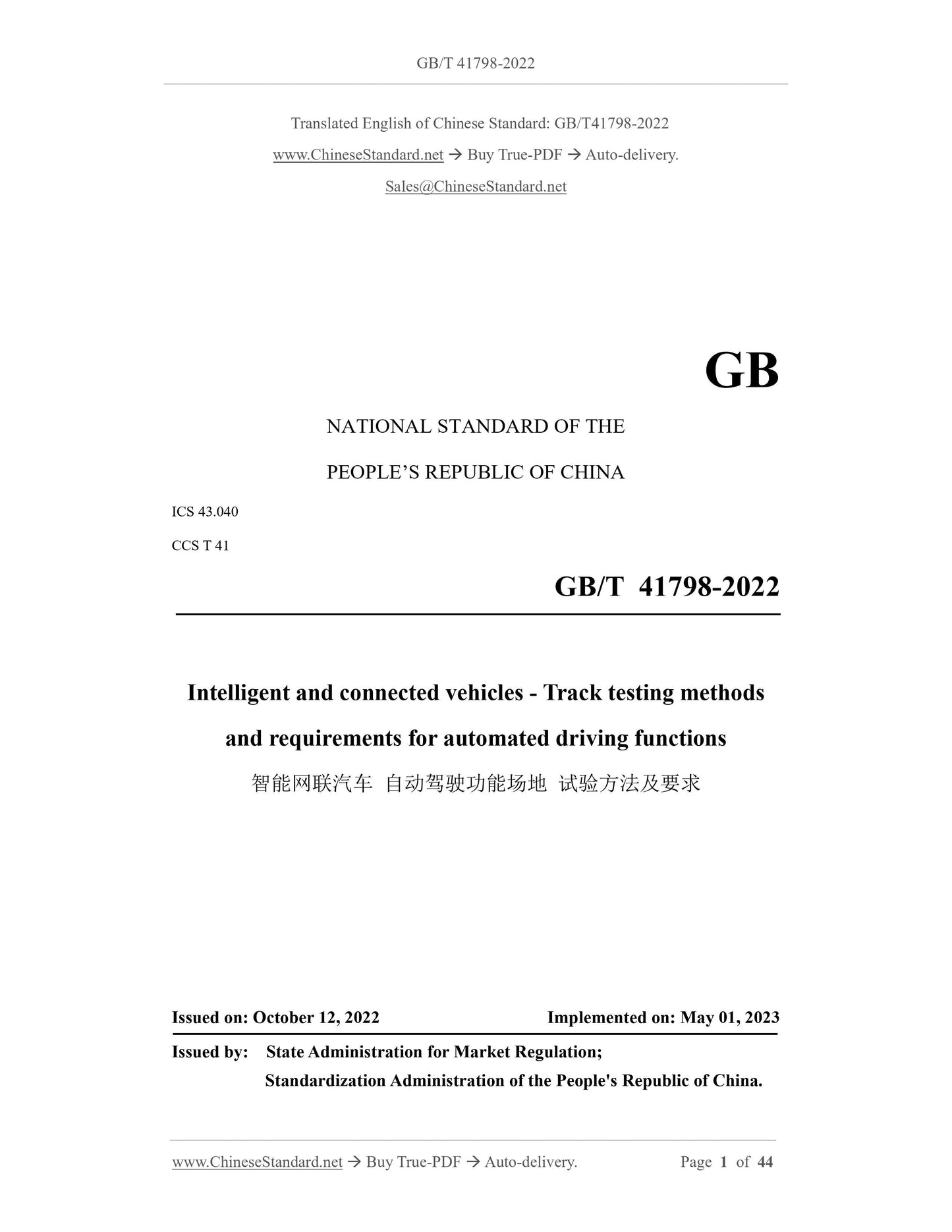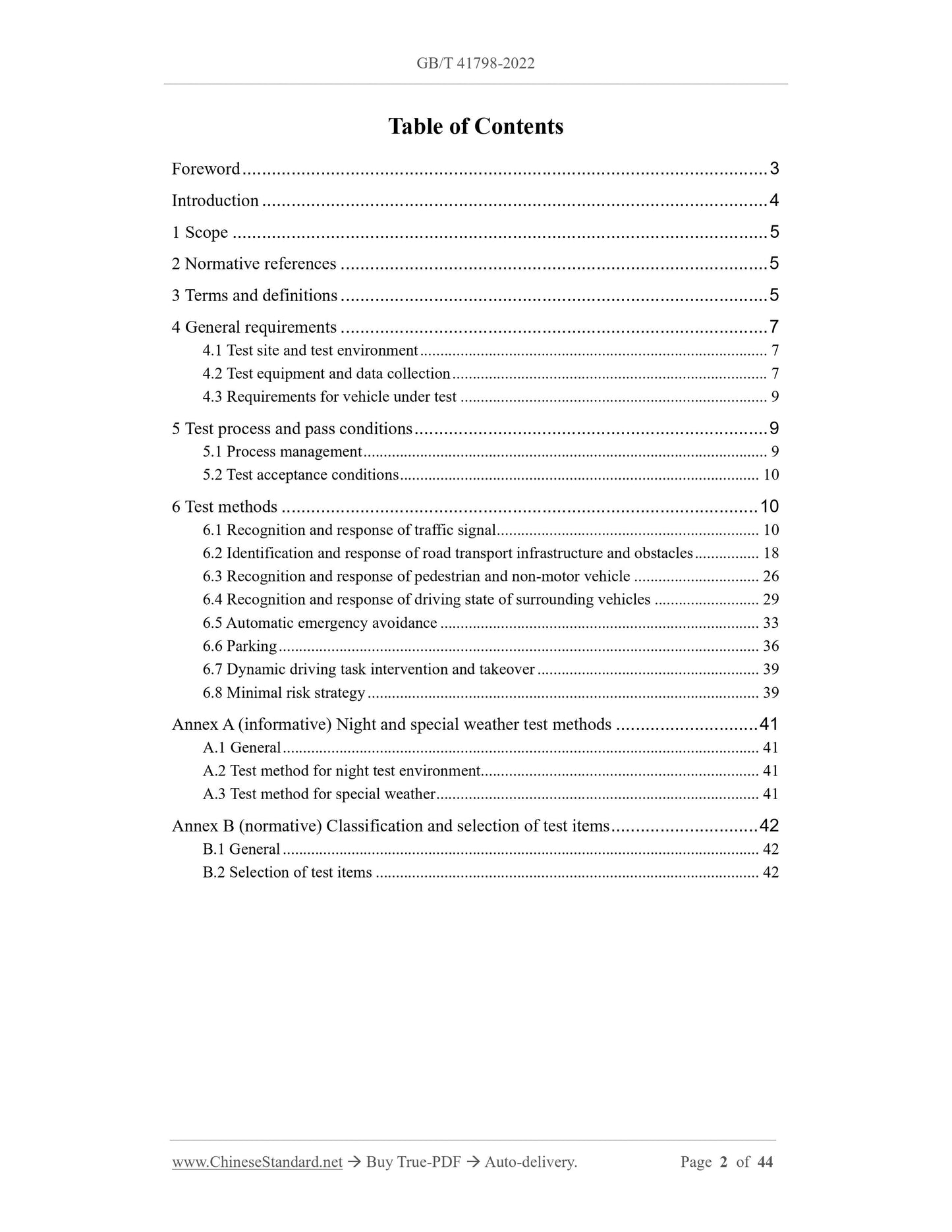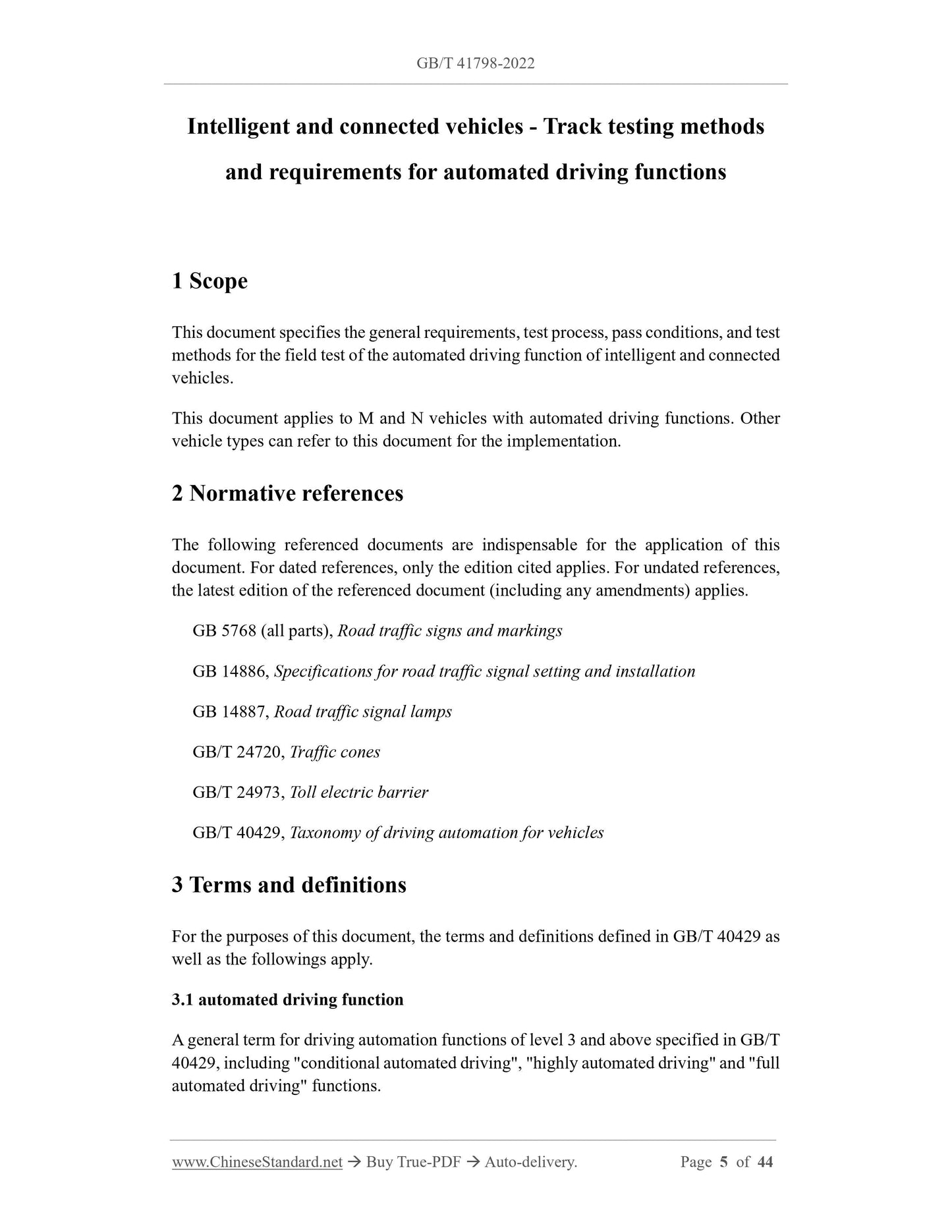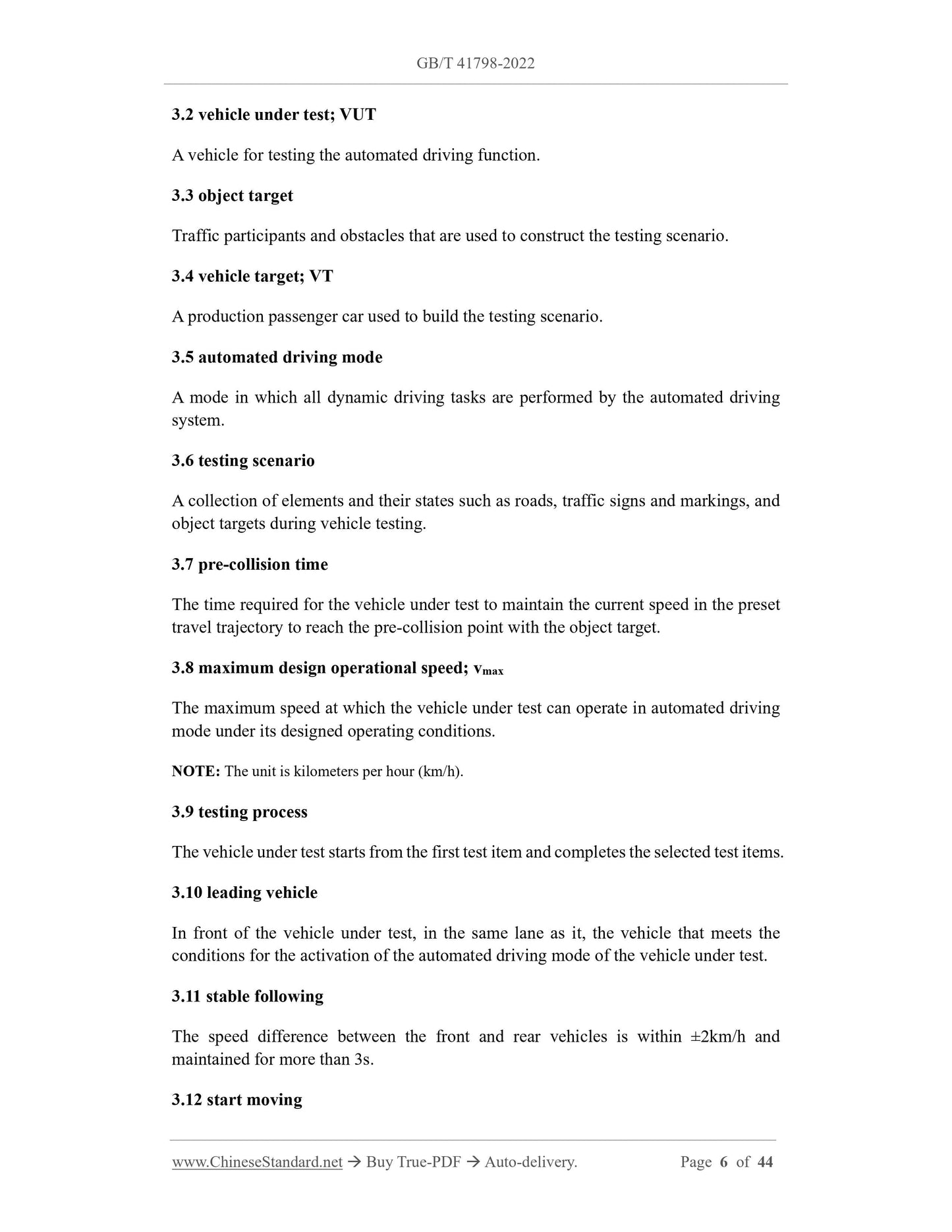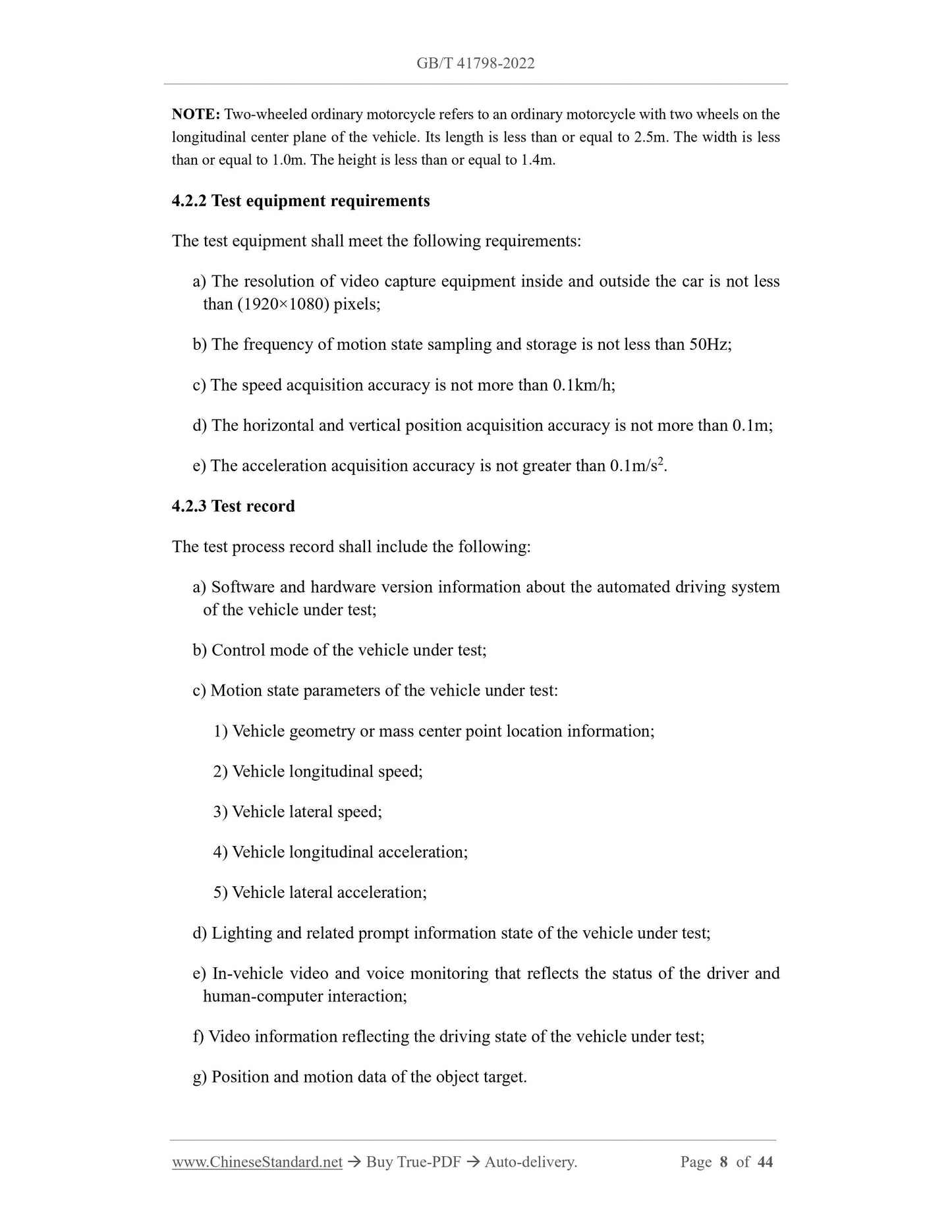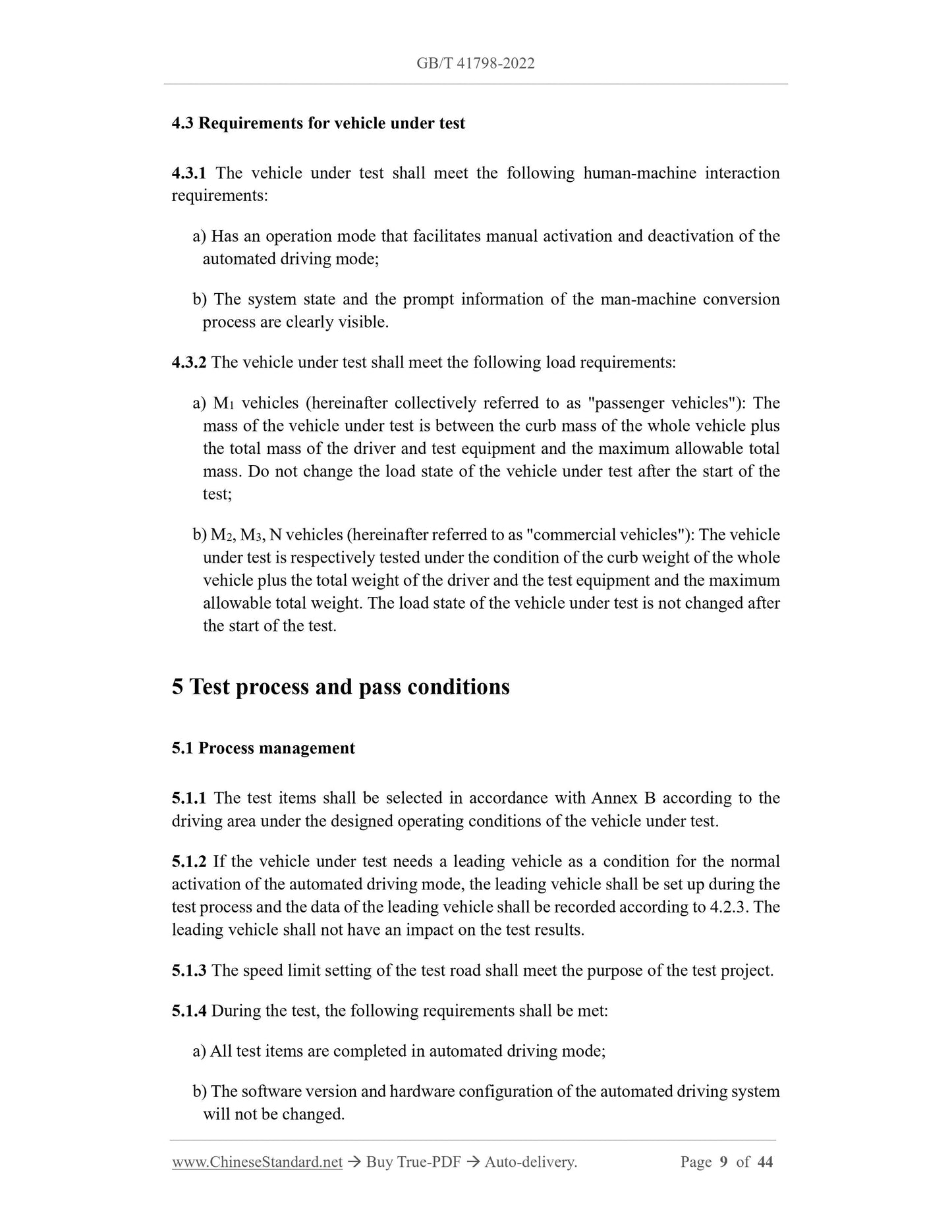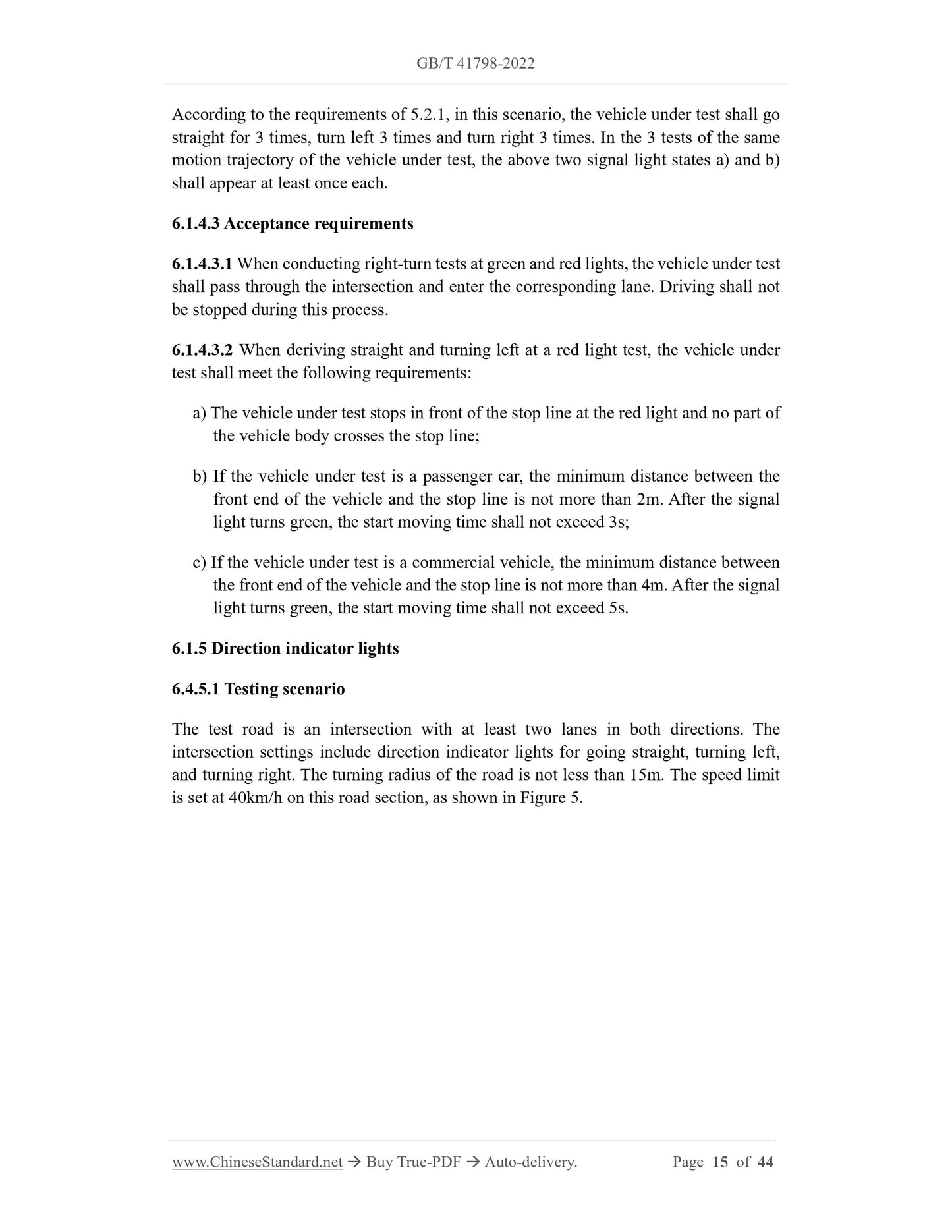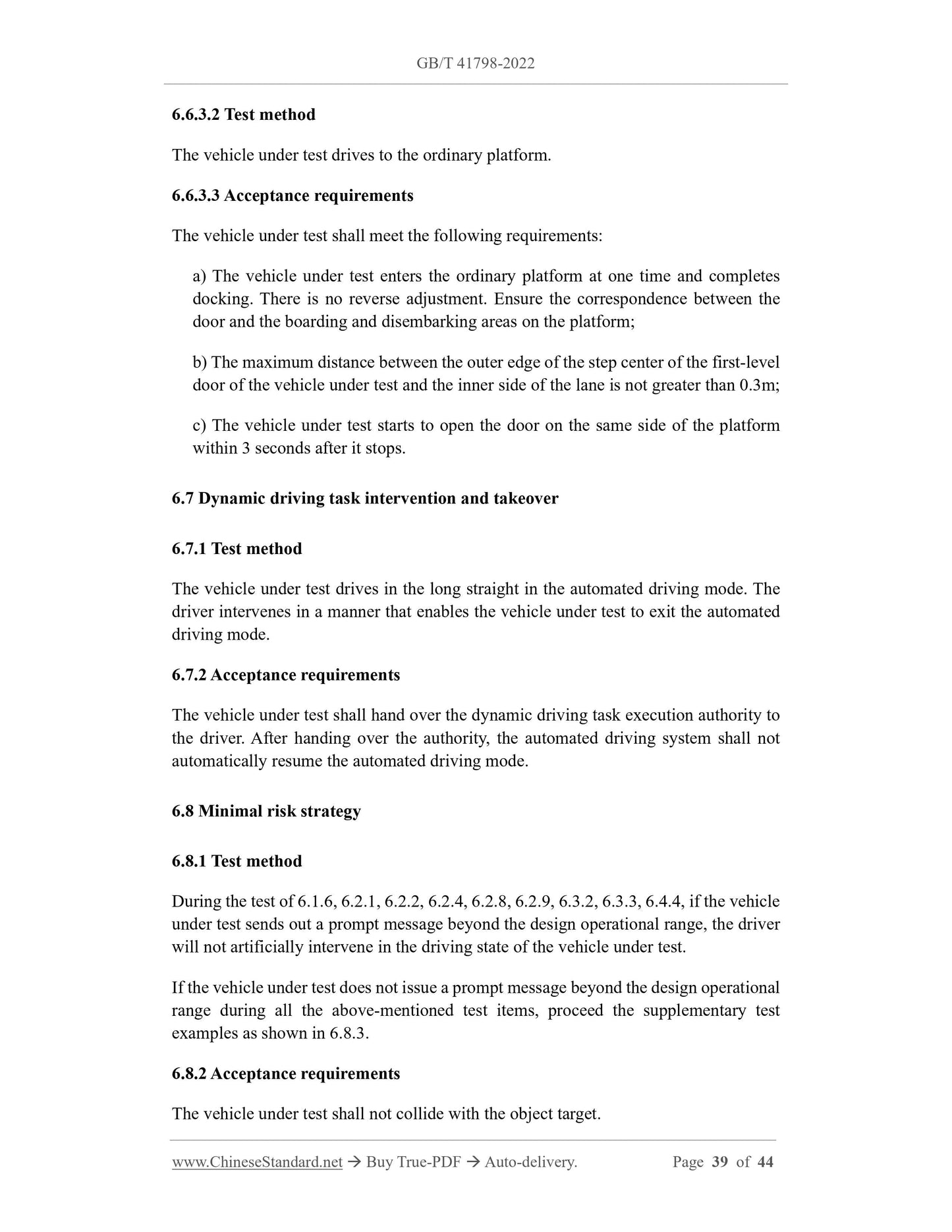1
/
of
8
www.ChineseStandard.us -- Field Test Asia Pte. Ltd.
GB/T 41798-2022 English PDF (GB/T41798-2022)
GB/T 41798-2022 English PDF (GB/T41798-2022)
Regular price
$395.00
Regular price
Sale price
$395.00
Unit price
/
per
Shipping calculated at checkout.
Couldn't load pickup availability
GB/T 41798-2022: Intelligent and connected vehicles - Track testing methods and requirements for automated driving functions
Delivery: 9 seconds. Download (and Email) true-PDF + Invoice.Get Quotation: Click GB/T 41798-2022 (Self-service in 1-minute)
Newer / historical versions: GB/T 41798-2022
Preview True-PDF
Scope
This document specifies the general requirements, test process, pass conditions, and testmethods for the field test of the automated driving function of intelligent and connected
vehicles.
This document applies to M and N vehicles with automated driving functions. Other
vehicle types can refer to this document for the implementation.
Basic Data
| Standard ID | GB/T 41798-2022 (GB/T41798-2022) |
| Description (Translated English) | Intelligent and connected vehicles - Track testing methods and requirements for automated driving functions |
| Sector / Industry | National Standard (Recommended) |
| Classification of Chinese Standard | T41 |
| Classification of International Standard | 43.040 |
| Word Count Estimation | 34,382 |
| Date of Issue | 2022-10-14 |
| Date of Implementation | 2023-05-01 |
| Issuing agency(ies) | State Administration for Market Regulation, China National Standardization Administration |
Share
